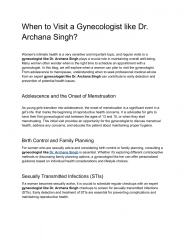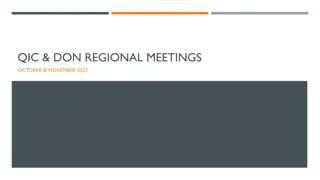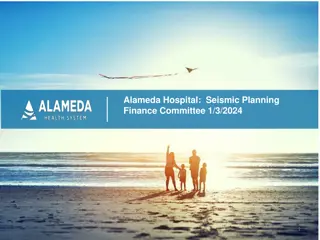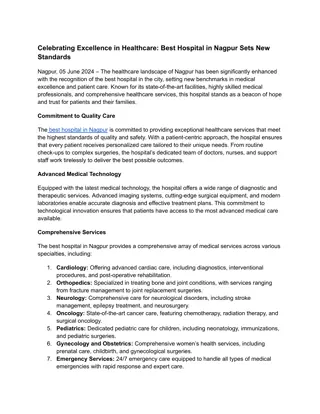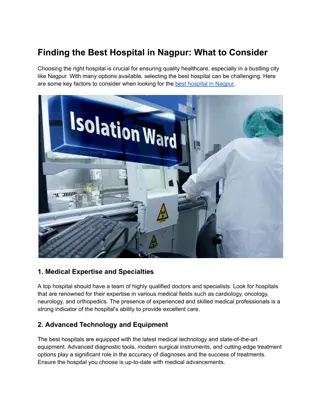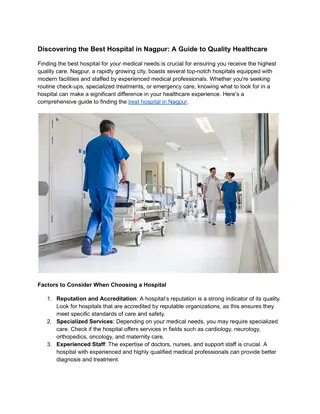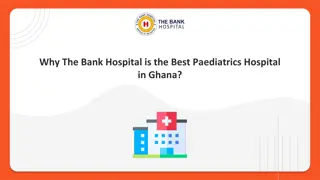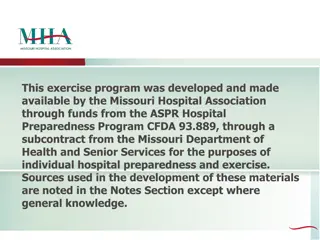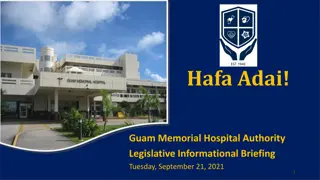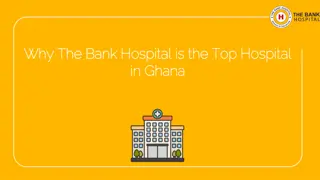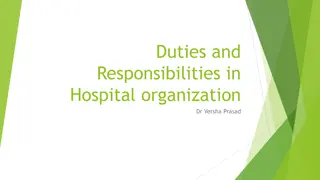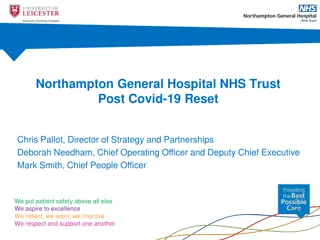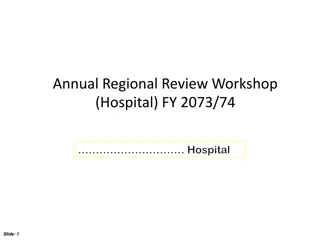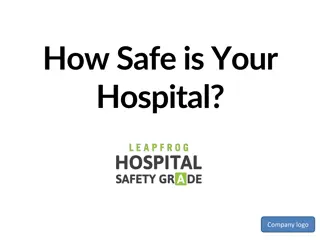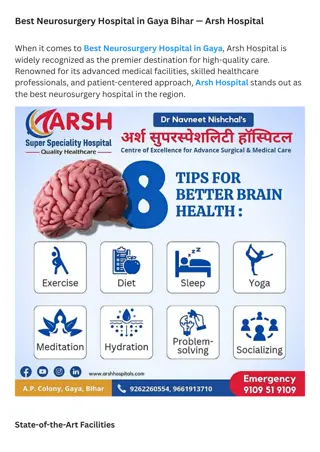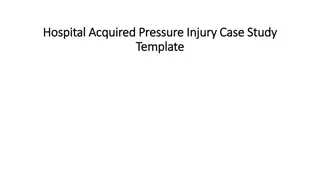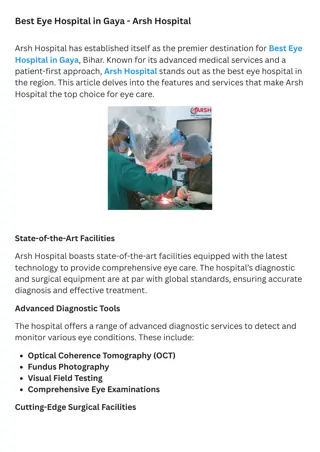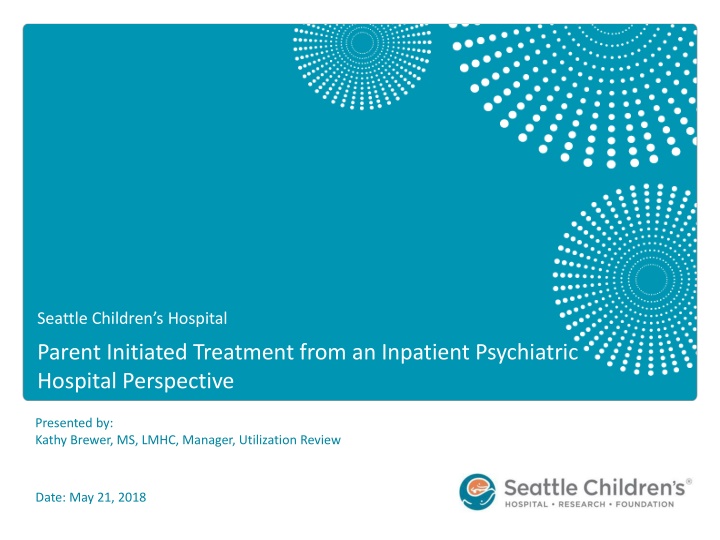
Hospital Perspective
Seattle Childrens Hospital Parent Initiated Treatment from an Inpatient Psychiatric Hospital Perspective. Presented by Kathy Brewer, MS, LMHC, Manager, Utilization Review. Data includes readmission rates, payer information, PIT Volume, notification process, advantages, and barriers to PIT.
Download Presentation

Please find below an Image/Link to download the presentation.
The content on the website is provided AS IS for your information and personal use only. It may not be sold, licensed, or shared on other websites without obtaining consent from the author. If you encounter any issues during the download, it is possible that the publisher has removed the file from their server.
You are allowed to download the files provided on this website for personal or commercial use, subject to the condition that they are used lawfully. All files are the property of their respective owners.
The content on the website is provided AS IS for your information and personal use only. It may not be sold, licensed, or shared on other websites without obtaining consent from the author.
E N D
Presentation Transcript
Seattle Childrens Hospital Parent Initiated Treatment from an Inpatient Psychiatric Hospital Perspective Presented by: Kathy Brewer, MS, LMHC, Manager, Utilization Review Date: May 21, 2018
Readmissions: Our inpatient unit has an overall 10% rate of readmission within 30 days of discharge (data from September 2017). BHO and commercial plans about the same. Commercial Financial Aid Medicaid Other Tricare Medicaid-BHO-ITA Medicaid-BHO Grand Total Payer class Readmission < 30 days Total Admissions Readmission Rate 129 1347 10% 0% 6% 0% 14% 27% 9% 10% 0 1 0 2 16 1 90 44 935 2435 13 12 83 238
Payer Based Variation: Average of # of days admission data from September 2017 Average LOS for all Commercial 7.1 Average LOS for all BHOs 6.4 Grays Harbor BHO 12.0 Greater Columbia BHO 11.1 Salish BHO 10.3 North Central BHO 9.8 Timberlands BHO 9.0 Spokane BHO 8.7 SW Behavioral BHO 8.5 Thurston-Mason BHO 7.4 Great Rivers BHO 7.1 Lewis County BHO 7.0 Optum Pierce BHO 7.0 North Sound BHO 5.9 King County BHO 5.8 - 2.0 4.0 6.0 8.0 10.0 12.0 14.0
PIT Volume: From 7/13 to 6/17, 66% of admissions were voluntary, 29% were PIT, and 5% were ITA. Admits by type, year 800 700 600 500 Voluntary 400 PIT 300 ITA 200 100 0 YEAR Jul 13 - Jun 14Jul 14 - Jun 15Jul 15 - Jun 16Jul 16 - Jun 17
PIT Notification Process: All parents/guardians of patients ages 13-17 are provided a copy of the Mental Health Treatment Options for Minors in the emergency department, whether or not their child is admitted. Patients admitted under PIT are provided a copy of When Your Parent Admits You to the Inpatient Psychiatry and Behavioral Medicine Unit which describes their rights.
PIT Advantages: Patients are motivated to stabilize in order to discharge. Parents feel empowered to help their child obtain necessary treatment. PIT admissions are less traumatic for teens compared to having to go to ITA court (strapped to a gurney). PIT admissions allow providers to spend their time delivering needed care in the hospital instead of testifying in court and waiting
PIT Barriers: PIT is not an option if there is no parent or legal guardian available to give consent must have legal guardian or Children s Administration case worker consent if patient is in dependency Other caregiving relatives and foster parents are not allowed to give consent for PIT admission. PIT less effective if parents disagree with the treatment plan or worry about teen anger directed at them re: admission
PIT Barriers: PIT does not allow providers to compel medications; patients must consent If compelling antipsychotic medications is necessary, this is a reason to convert to ITA There is no less restrictive order (LRO) for PIT The LRO can serve as a safety net which allows a patient to be readmitted for evaluation by DMHP if the patient is not following the agreement that led to discharge and/or becoming unsafe again. Without ITA s LRO, only outpatient option to compel treatment is parent submitting an At-Risk-Youth petition to juvenile court
PIT Barriers: Community providers prefer ITA if concerned patient may need CLIP facility patients on 180 day orders are eligible for CLIP Voluntary CLIP process burdensome - very time consuming in some counties PIT expires 30 days after review, regardless of patient stability. If a patient cannot be safely discharge, an ITA evaluation will be need to be pursued to keep the patient in the hospital.
PIT Barriers: Authorization from payer is required for PIT admission and continued stay. Challenge to help families ready to take their child home when safe, but still symptomatic Length of authorizations has been decreasing Youth with developmental disabilities stabilizing on unit at time of PIT review but still not safe to return home We have had several patients denied for continued stay under PIT and had to request ITA to continue a stay due to safety concerns
PIT Dynamics: Inpatient Significant regional differences in PIT referrals King and other urban counties often refer patients under PIT Many rural counties seem to avoid PIT Our clinical teams will then drop the rural ITA and convert to PIT soon after admission after talking with parents/legal guardians ITA request means Designated Crisis Responder (DCR) does an ER evaluation, which a rural hospital might rely on for getting a psychiatric assessment
PIT Dynamics: Outpatient We have a large outpatient program. We have not used outpatient PIT primarily because evaluation only is not particularly helpful to families. Treatment is the most helpful mental health intervention, and the outpatient PIT law only includes evaluation. There is general lack of awareness about outpatient PIT options and not the same notification requirements for providers.
Recommendations: Funding to increase consistent education about PIT across Washington State for: BHO contracted agencies DCR Emergency department personnel Hospitals Medicaid funds for intermediate levels of care such as partial hospitalization, intensive outpatient, residential treatment (e.g. severe eating disorders not well served by CLIP).
Recommendations: Consider changing the law to allow for PIT stays longer than 30 days to remove need to convert some to ITA OR consider revision to change ITA law for juveniles to count time already under PIT for PIT to ITA conversions Clarify areas in the law regarding consent to release information for patients admitted under PIT (i.e. who has authority to release records) Considering changing the law regarding outpatient PIT to include treatment (maybe with time limits?) and expectations to notify parents about outpatient PIT as an option

